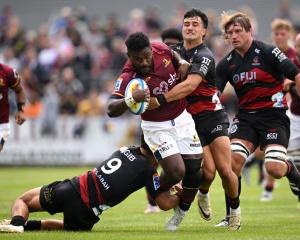New Zealnd rugby is littered with landmark years but few are more significant, in relation to the current climate, than 1999 and 2005.
The former is when the New Zealand Rugby Players Association was formed, four years after the game went professional, and the latter is the year in which the groundbreaking second collective agreement was signed with the New Zealand Rugby Union.
Players' associations are nothing new in sport. In fact, in the high-octane world of professional sport in the United States, they are hugely powerful organisations.
Major strikes that have shut down Major League Baseball and the NBA are testament to that.
The NZRPA has gathered in strength since its establishment and is now a heavyweight on the rugby scene, its boss (Rob Nichol) at the forefront and its constituents (the players) able to have a fair say on their employment.
What the professional players started to realise 10 years ago was that they needed an independent body to represent their interests.
The players' association has, and will always have, at its root the desire to protect the welfare of its players.
The NZRPA includes overseas-based players, has set up a long-term loyalty scheme to help players plan for life after rugby, and helps injured players.
Mostly, though, the NZRPA is about negotiation, and the collective agreement shows how it was able to play hardball with the NZRU.
The agreement followed 12 months of intense give-and-take between the NZRU, the NZRPA and the provincial unions, and the result was major gains for professional rugby players in this country.
They got a ground-breaking revenue-sharing deal, with 32.4% of all player-generated revenue (broadcasting, sponsorship and match income) going into an annual pool for payments and initiatives.
There was also a new retainer system, with a player's base remuneration guaranteed for the duration of his contract.
An example of that is if a player signs a $65,000 base contract for two years, makes a Super 14 squad in the first year, but is not selected in the second, he is still entitled to a full payment.
A system of weekly assembly rates for national sides was also established. They are: All Blacks ($7500), Junior All Blacks ($3500), New Zealand Maori ($2000) and All Black trial ($2000).
Changes to the national provincial championship saw a minimum retainer of $15,000 introduced, with the 14 premier unions each required to contract at least 26 players.
A salary cap of $2 million and a system where NZRU-contracted players were given ‘‘notional values'' in assessing the cap were also introduced.
Annual leave rose from four to eight weeks, and the benevolent and welfare fund was formed, into which is poured $600,000 from the player payment pool.
What does all this mean? That the players are better looked after, obviously. Salaries have risen across the board, with one report estimating the average Super 14 player now earns $200,000.
And there is far more certainty for players worried non-selection or injury will affect their ability to pay the bills.
Of course, there have been murmurs of discontent. Many unions say they now have to spend too much on players, and that players of average quality are overpaid.
But the NZRPA is here to stay, and it will be fighting for its rights when it and the NZRU sit down to negotiate again when the collective agreement expires in December.












